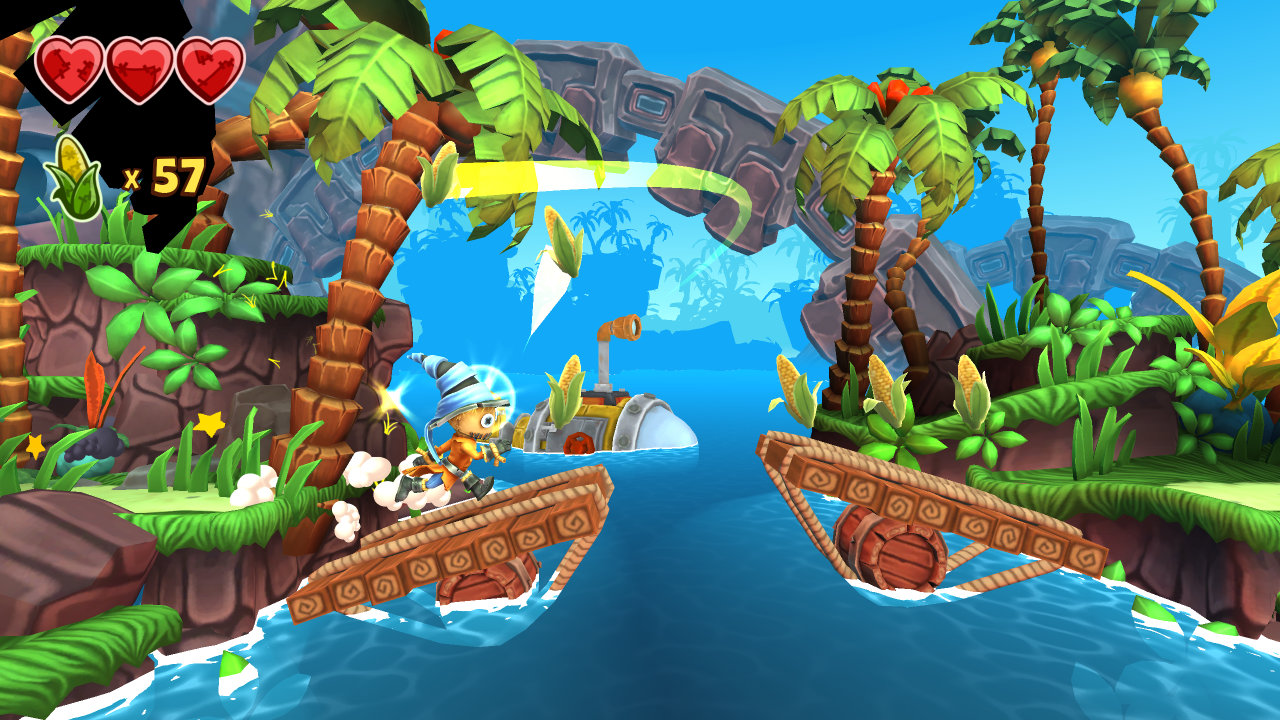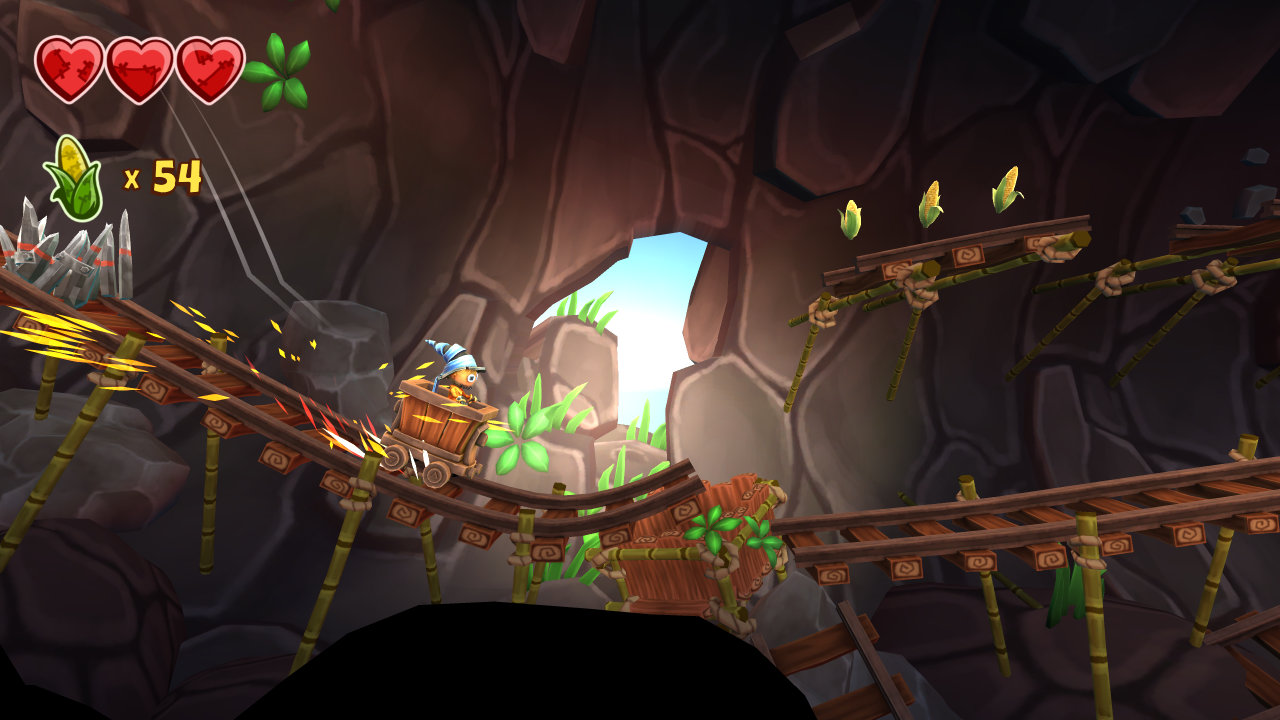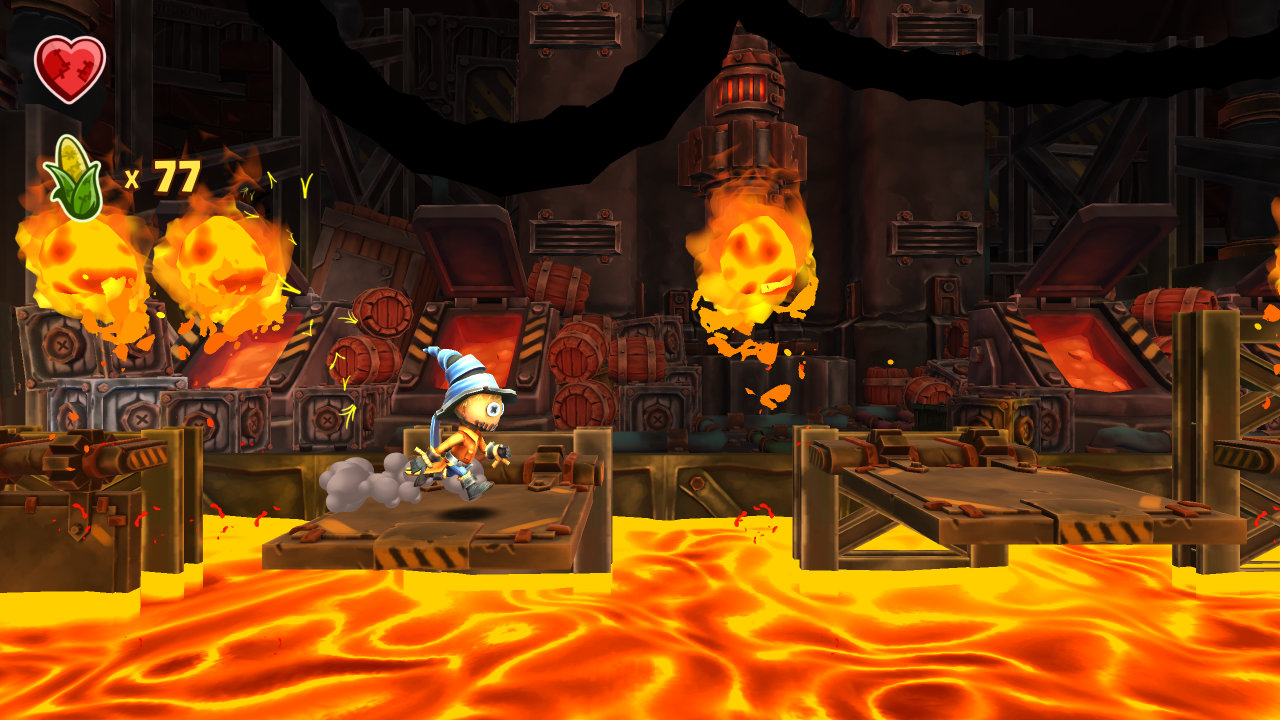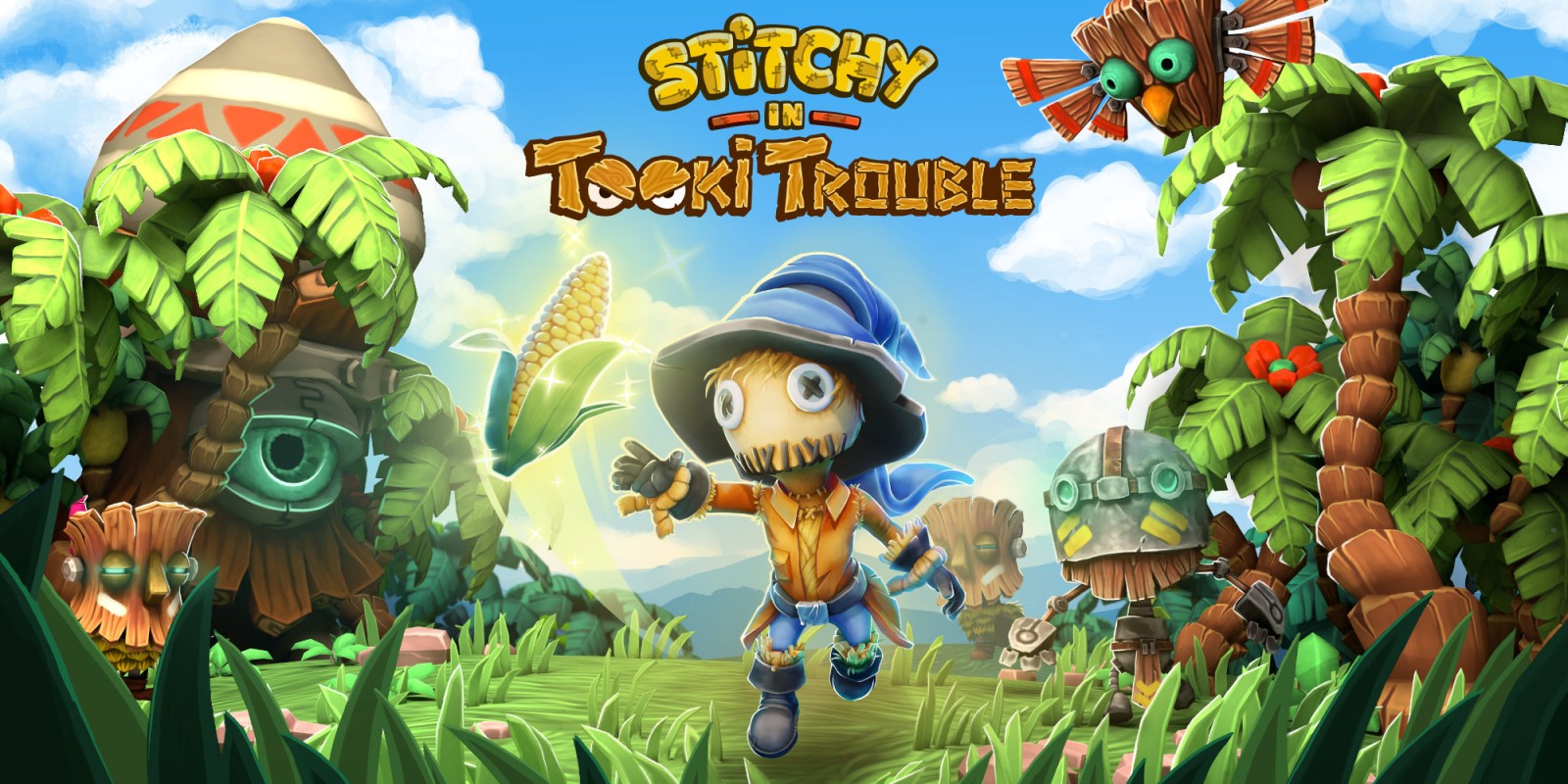A colourful 2.5D platformer that does little to hide its inspirations, Stitchy In Tooki Trouble is a fun if short lived title. The Finger Guns Review.
When we first received the press release for Stitchy In Tooki Trouble, it said that the game is “inspired by classics like Donkey Kong and Crash Bandicoot – and we hope it shows”. It takes just a few seconds for those inspirations to reveal themselves. The very first thing you see, the title screen, is accompanied by a little ditty that’s almost certainly inspired by a Nintendo classic. Everything from the premise to the 2.5D platforming game play are most definitely built on the foundation created by Donkey Kong Country. While that means that this isn’t the most original game, it doesn’t take away from how fun it is.
Stitchy In Tooki Trouble follows the adventure of the titular character Stitchy. A scarecrow who was peacefully overseeing a field of corn, Stitchy is suddenly awoken when a tribe of little wooden creatures called the Tooki arrive. They rampage through his field and pilfer all the corn. Brought to life by some unexplained magical energy, Stitchy sets out to return the stolen corn and save the farm. He is a scarecrow after all. His one and only job is to prevent crops from being taken. This is all the plot you’ll be getting in this game and to be honest, that’s all it needed.
Set across 33 levels separated into 3 themed hub worlds, Stitchy In Tooki Trouble has the scarecrow star travel through a tropical jungle, scale ice covered peaks and navigate an industrial complex. The aim of each level is to get from the left-most starting point following a trail of corn cobs to the end point on the right where a crate of corn is located. In order to do so, Stitchy will be jumping, bouncing, swinging and smashing over ever more challenging obstacles and adversaries. Each hub world is then punctuated by a boss battle that ties to the theme of the levels.

The level design in Stitchy In Tooki Trouble feels like developers Polygoat created a checklist of all the best platforming game elements and made sure to include it all. Enemies to bounce on? Check. Moving platforms over hazardous flooring? Of course. Platforms that dissolve or fall shortly after bring touched? Affirmative. Chains to swing across? Yup. Fish enemies that leap out of the water? Essential, really. Sections where a hazard chases you either horizontally or vertically and you’ve got to perform a platforming section quickly before it catches you? Present and correct. 3 of the levels in the game are also heavily inspired by the mine cart levels from Donkey Kong; Stitchy rides along rails in his own cart avoiding pitfalls and smashing crates of corn.
What impressed me most about the design in Stitchy In Tooki Trouble is that each of the 27 standard levels introduces something new. Whether that be a new kind of platforming set piece, enemy type or traversal system, each level brings something new which gives them their own feel. Some of these aspects only exist in a singular level while others join the other elements already introduced in order to increase the difficulty moving forward. There’s a fluidity to the structure of the levels too, as if everything has been pieced together around the capabilities of Stitchy. Many of the gaps to jump are in that tantalising sweet spot between too long to feel possible and too short making them feel inconsequential. In other sections, the Tooki minions will line up in unison so that if you time it right, you can bounce off their heads, one after another.

Stitchy In Tooki Trouble is obviously a game that’s geared towards the younger gamer. In that vein, this game isn’t particularly difficult and has a very generous checkpoint system. Aside from a few tricky sections with instant death pit falls, the majority of this title is very accommodating to players of all skill levels. That’s best represented in the lives and “continue” system. Stitchy begins each level with 3 hearts. Whenever he takes damage, one of those hearts disappears but a very generous period of invulnerability begins which can see the hay-filled hero past many of the games obstacles, even walking on water. These hearts can be restored by smashing boxes found around each level. If Stitchy loses all 3 of his hearts, he’ll lose a life. For every 100 pieces of corn Stitchy picks up, he’s granted an extra life. There’s an abundance of corn in most levels so it’s unlikely that experienced players will ever run out of lives – my 11 year old finished the game with 9 lives left intact. My youngest lad struggled in the third set of levels however and did lose all of his lives. Stitchy In Tooki Trouble isn’t as punishing as some of its forebears however – the game offers a “Continue” each and every time this happens which gives Stitchy an additional 5 lives and starts him off from the last checkpoint. It’s a very forgiving game which helps the younger player avoid some of the temper tantrums I personally threw back in the 90’s when greeted by a “Game Over” screen.
Each of the standard levels in Stitchy In Tooki Trouble has 2 sets of optional objectives. Carefully placed around each level are 3 collectables, each of which are part of a totem pole. The majority of these are placed in more difficult to reach areas. There’s some which are impossible to reach without bouncing on the head of an enemy first. Others are just outside of the usual camera angle and require a little bit of exploration in order to find. Once you’ve found all 27 of these for a hub world, a bonus mission is opened up (more on these in a second). The other secondary objective are time based. Each level has a 3 star scale based on the time taken for completion. To achieve a 3 star score on some areas, you’ll really have to truck it and ignore a lot of the optional platforming sections.

For me, bonus levels should be a reward for the extra efforts and perseverance of the player. Unfortunately, the 3 bonus levels in Stitchy In Tooki Trouble don’t live up to that name. They’re simply another level to complete just without the totem collectables. They’re mildly more challenging than the base levels but still a straightforward left to right platforming run.
Then there’s the boss battles. Structured like classic evolving brawls, the 3 bosses get progressively more difficult to overcome the more you bash them on the head/limbs. They all boil down to a simple tactic though – avoid whatever they throw at you and wait for your opportunity to strike. Rather than a crescendo finish for each hub world, they’re a little too simplistic and underwhelming.
And then, it’s over. Just when it feels like Stitchy In Tooki Trouble is hitting its stride, it ends. It took me just under 3 hours to complete the game and a further half an hour to clear up the secondary objectives I’d missed. Of course, this game isn’t primarily designed for 30-somethings who cut their teeth on Donkey Kong Country. It’s aiming to entertain the younger crowd. My 11 year old took 4 hours to clear the whole game. My pair of 8 year old twins are still having fun with it more than 5 hours in but they’re closing in on the end.
Of course, this is probably a by-product of Stitchy In Tooki Trouble introducing something new within each level. Not a single moment of this game feels like filler content. Each of the levels, presented in gorgeous, colourful art with a deeper world exhibited off in the background, has been designed with purpose and a desired pace. It’s certainly not as long as those games it is inspired by but what is here is family friendly and of a high quality. Got a bus journey to fill or a rainy afternoon to kill? Stitchy In Tooki Trouble is a very good way to do just that.
A colourful, family friendly 2.5D platformer that makes no effort to hide its inspirations, Stitchy In Tooki Trouble delivers a few hours of well-crafted gaming. For older players, it’ll feel like a blast from the past that’s over just as quickly as it began. For younger players though, Stitchy will keep them engrossed for longer with forgiving systems, luscious worlds and slick platforming play.

Stitchy In Tooki Trouble is launching on the Nintendo Switch on April 15th, 2021.
Developer: Polygoat
Publisher: Polygoat
Disclaimer: In order to complete this review, we were provided with a promotional copy of the game. For our full review policy, please go here.
If you enjoyed this article or any more of our content, please consider our Patreon.
Make sure to follow Finger Guns on our social channels – Twitter, Facebook, Twitch, Spotify or Apple Podcasts – to keep up to date on our news, reviews and features.
